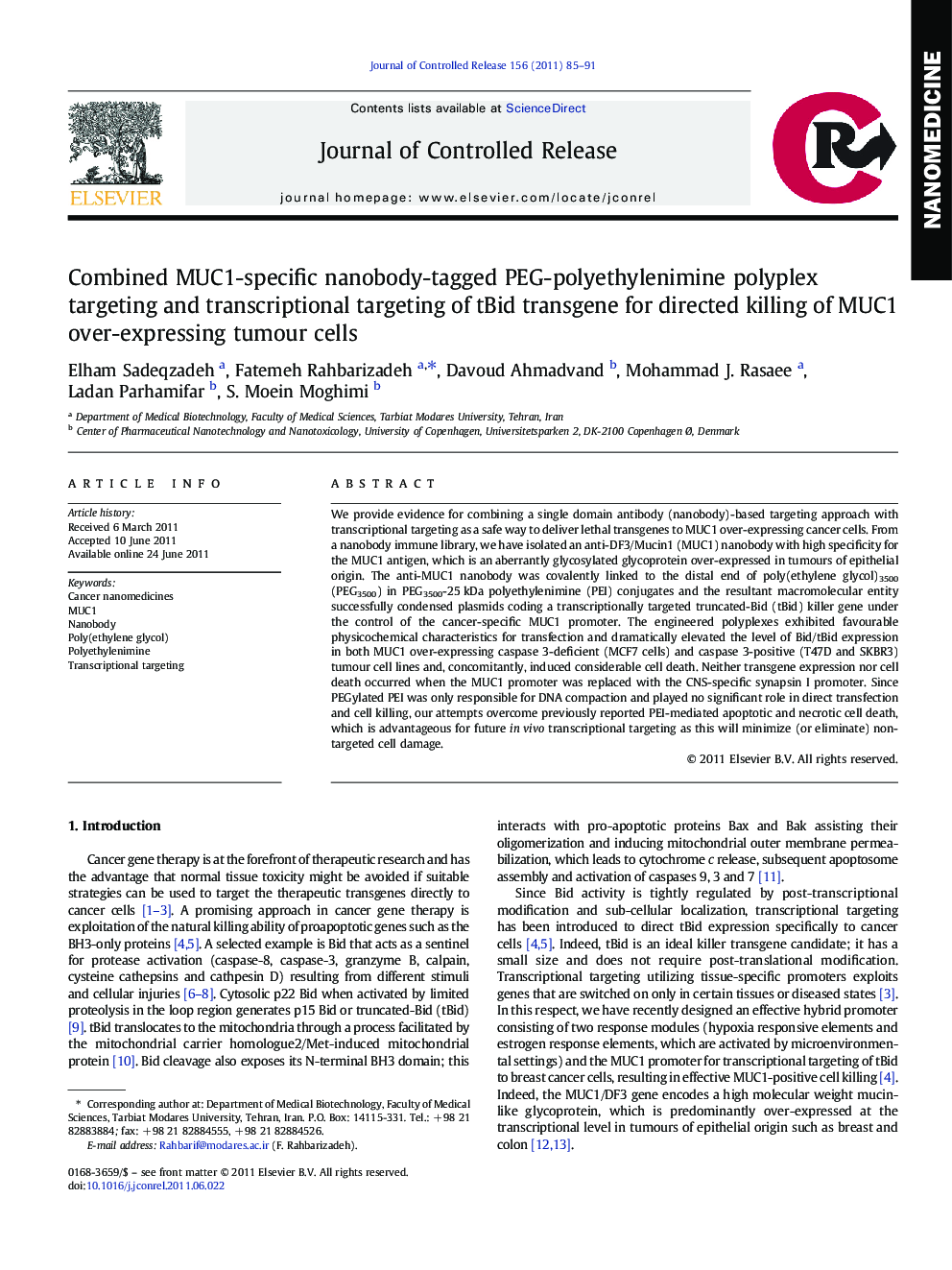| کد مقاله | کد نشریه | سال انتشار | مقاله انگلیسی | نسخه تمام متن |
|---|---|---|---|---|
| 1424905 | 986745 | 2011 | 7 صفحه PDF | دانلود رایگان |

We provide evidence for combining a single domain antibody (nanobody)-based targeting approach with transcriptional targeting as a safe way to deliver lethal transgenes to MUC1 over-expressing cancer cells. From a nanobody immune library, we have isolated an anti-DF3/Mucin1 (MUC1) nanobody with high specificity for the MUC1 antigen, which is an aberrantly glycosylated glycoprotein over-expressed in tumours of epithelial origin. The anti-MUC1 nanobody was covalently linked to the distal end of poly(ethylene glycol)3500 (PEG3500) in PEG3500-25 kDa polyethylenimine (PEI) conjugates and the resultant macromolecular entity successfully condensed plasmids coding a transcriptionally targeted truncated-Bid (tBid) killer gene under the control of the cancer-specific MUC1 promoter. The engineered polyplexes exhibited favourable physicochemical characteristics for transfection and dramatically elevated the level of Bid/tBid expression in both MUC1 over-expressing caspase 3-deficient (MCF7 cells) and caspase 3-positive (T47D and SKBR3) tumour cell lines and, concomitantly, induced considerable cell death. Neither transgene expression nor cell death occurred when the MUC1 promoter was replaced with the CNS-specific synapsin I promoter. Since PEGylated PEI was only responsible for DNA compaction and played no significant role in direct transfection and cell killing, our attempts overcome previously reported PEI-mediated apoptotic and necrotic cell death, which is advantageous for future in vivo transcriptional targeting as this will minimize (or eliminate) non-targeted cell damage.
Graphical AbstractFigure optionsDownload as PowerPoint slide
Journal: Journal of Controlled Release - Volume 156, Issue 1, 30 November 2011, Pages 85–91